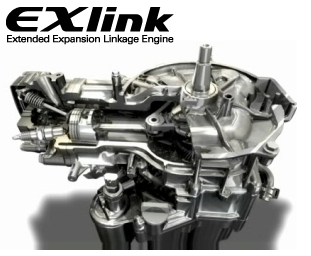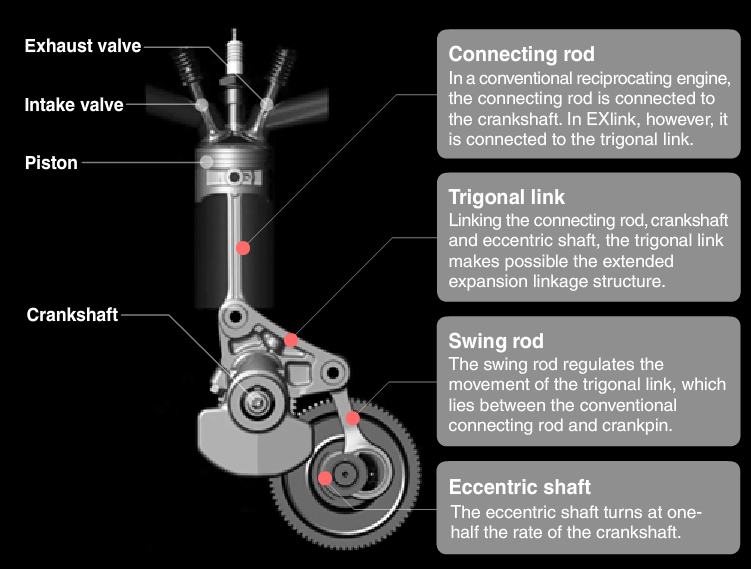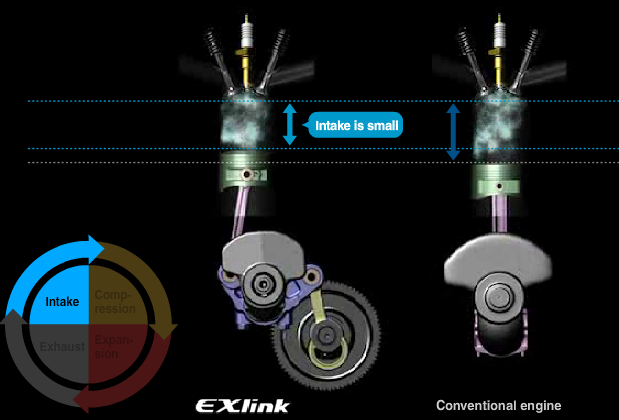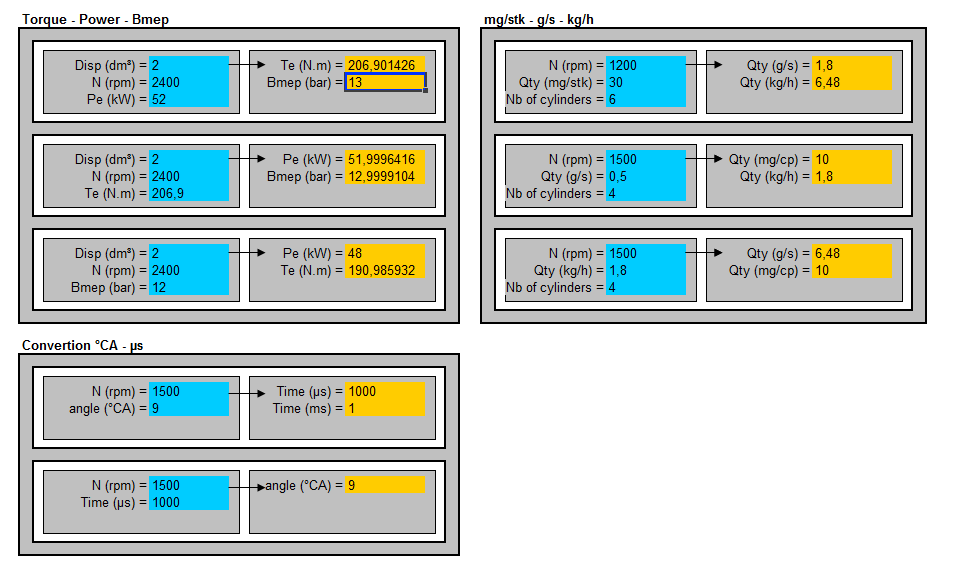Performing more work with less fuel… Energy efficiency has been of prime importance in engine design, driving the development of countless new models over the years.
With the goal of taking energy efficiency to a new step, Honda developed its own linkage engine design based on Atkinson’s extended-expansion cycle engine, invented some 130 years ago. The first small engine of its type to be commercially produced, the EXlink has an expansion stroke longer than its compression stroke to realize an expansion ratio higher than its compression ratio.
In contrast to a conventional Otto cycle engine, in which the piston strokes are typically of the same length, the EXlink has expansion and exhaust strokes that are longer than its intake and compression strokes. The result is an expansion ratio that is 1.4 times higher than the compression ratio, allowing EXlink to offer lower pumping losses and substantially higher thermal efficiency than a conventional engine.
The EXlink structure
EXlink features a trigonal link that lies between the connecting rod and crankshaft found in conventional engines. The trigonal link is connected via a swingrod to an eccentric shaft, completing the extended expansion linkage design. The eccentric shaft turns at one-half the speed of the crankshaft, making possible pairs of piston strokes that alternate between short and long.
To realize a high expansion ratio, EXlink uses the short strokes for intake and compression and the long strokes for expansion and exhaust, expanding 110 cc of intake to 163 cc. The key benefit of the Atkinson cycle is taking in a smaller amount of air and fuel and performing more work with it for enhanced fuel efficiency.





















Real Driving conditions testing will be the key promotional proof. The engine must be compliant to emissions limits and after the dieselgate, even for CI engines, the compliance procedures will be strictly enforced, after of course the agreement on the testing cycle! The respect of emissions limits accompanied by the reduced and verified fuel consumption in these RDE conditions and tests, will be the key of elements of making a purchasing decision. Operational cost will be the main key as purchasing cost will be decreased, with other innovations in ignition systems, spark plugs, extended use of aluminum engine parts and overall machine/vehicle reduced weight. Introduction of automatic transmission systems in the market faced similar doubts, but in respected areas they eventually dominated the market. A very similar market entrance curve will prevail in the engines category as well.